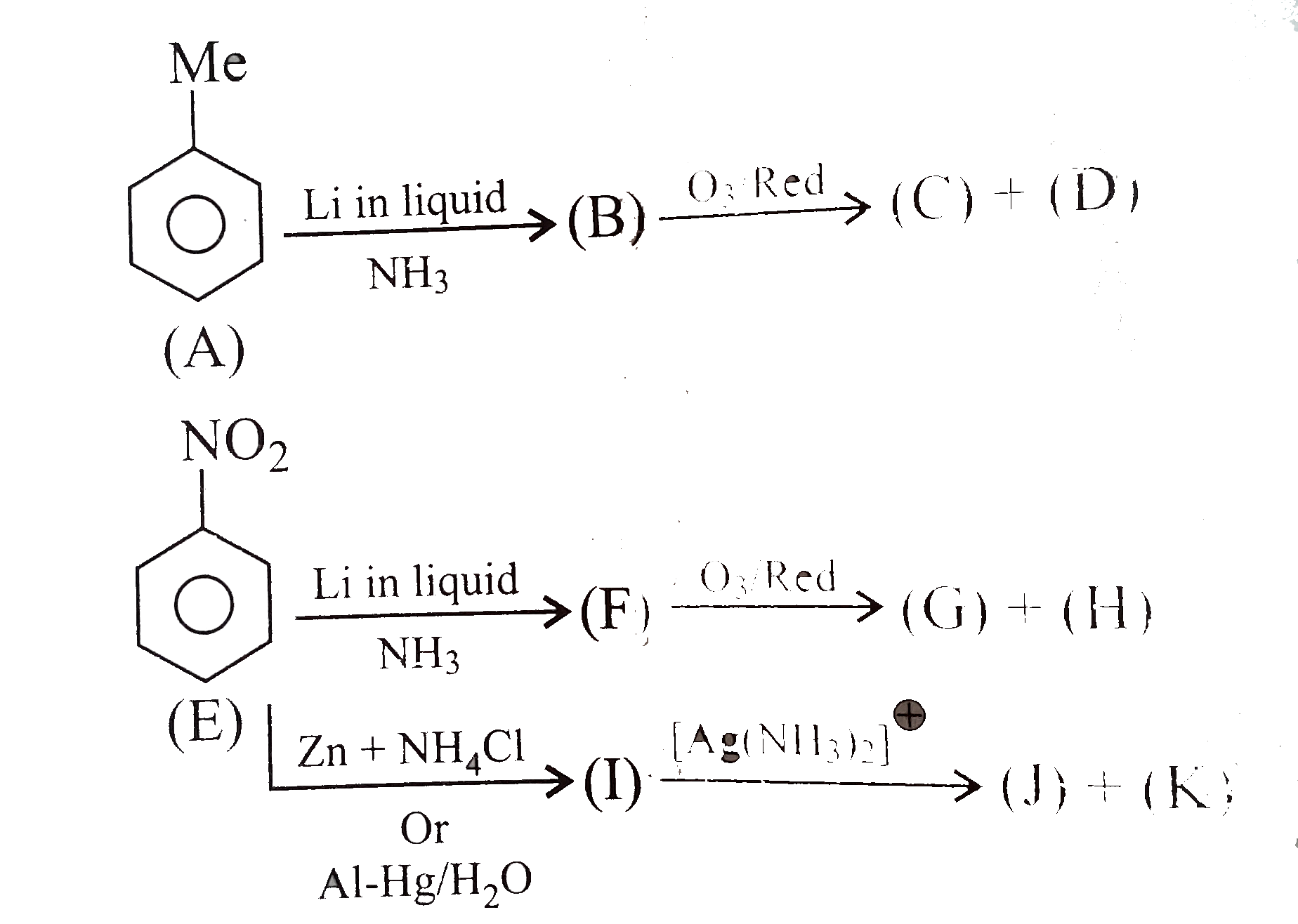
The compound (G) is :
A

B

C

D
Both (B) and (C)
Text Solution
The correct Answer is:D
|
Topper's Solved these Questions
- REDUCTION, OXIDATION & HYDROLYSIS REACTIONSBOOK - RESONANCECHAPTER - REDUCTION, OXIDATION & HYDROLYSIS REACTIONSEXERCISE - Part-I : Jee (Advanced) (Previous years)
13 Videos
- REDUCTION, OXIDATION & HYDROLYSIS REACTIONSBOOK - RESONANCECHAPTER - REDUCTION, OXIDATION & HYDROLYSIS REACTIONSEXERCISE - Part-II JEE (Main) AIEEE Problems (Previous Years)
16 Videos
- REDUCTION, OXIDATION & HYDROLYSIS REACTIONSBOOK - RESONANCECHAPTER - REDUCTION, OXIDATION & HYDROLYSIS REACTIONSEXERCISE - Part-III: One or more than one options correct type
5 Videos
- PERIODIC TABLE & PERIODICITYBOOK - RESONANCECHAPTER - PERIODIC TABLE & PERIODICITYEXERCISE - Inorganic chemistry (Periodic Table & Periodicity
61 Videos
- S BLOCK ELEMENTSBOOK - RESONANCECHAPTER - S BLOCK ELEMENTSEXERCISE - INORGANIC CHEMISTRY(s-Block Elements)
36 Videos
Similar Questions
Knowledge Check

The compound (G) and (H), respectively, are:A B
B C
C D
D

The compounds (G) and (H), respectively, are :APropanamide and CH2=OBEthylamine and CH2=OCEthylamine and HCOOHDPropanamide and HCOOH
The compound (G) and (H), respectively, are:Aa. Bb.
Bb. Cc.
Cc. Dd.
Dd.
Paragraph for problems 9−15

Compound (G) is:
View SolutionParagraph for problems 9−15

Compound (G) is:
View Solution
The compound F(C6H12O) on oxidative ozonolysis yirlds acetic acid and a compound (G) (C4H8O3). The new compound (G) on heating gives:
View SolutionIn the following sequence of reactions, products (A) to (H) are formed:

Compound (G) is:
View Solution
The compounds (F) are (G), resprctively, are:
View Solution
